Montana Museum of Railroad History
0-4-0 Move
A lonely 0-4-0
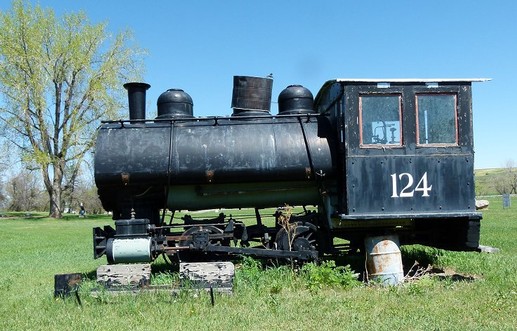
Suddenly sourounded by Cranes...no not the birds.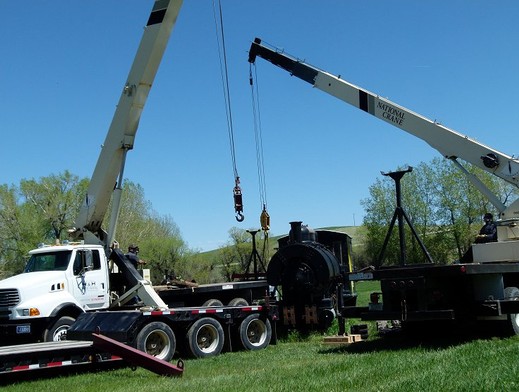
Strapped up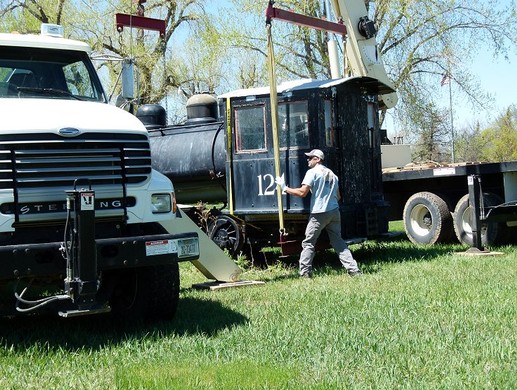
Sky hooks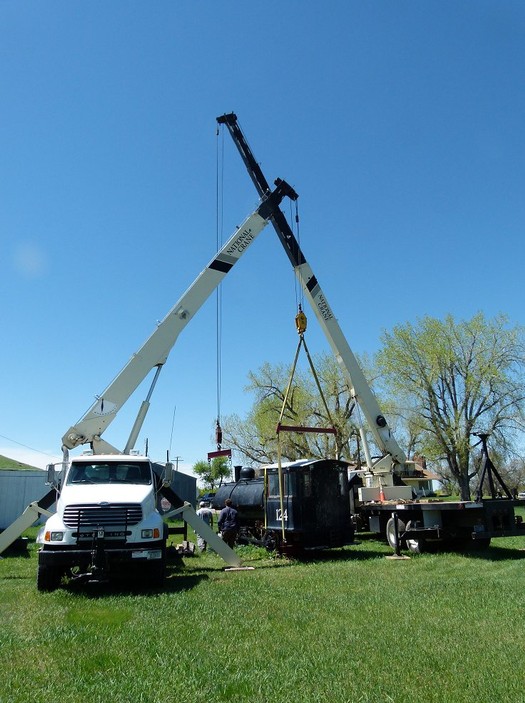
Maybe these cranes are birds..... cuz I can fly!!!!!!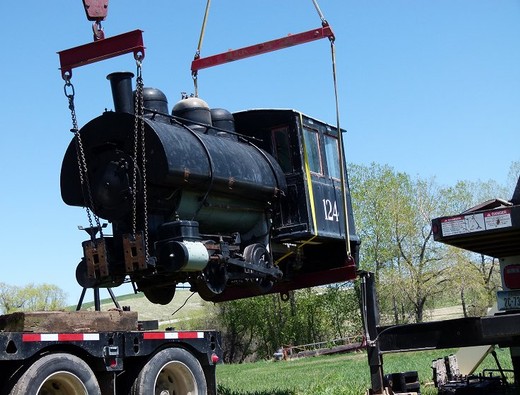
The truck backs up.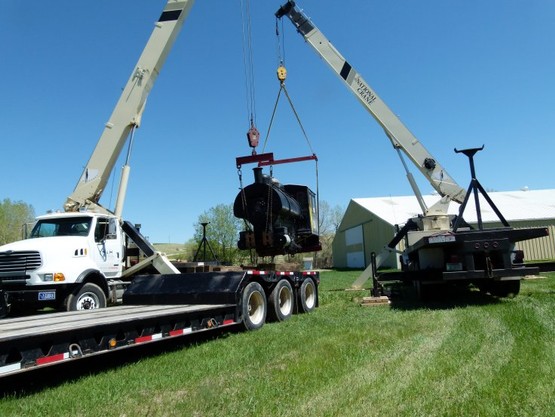
Carefull,.....please.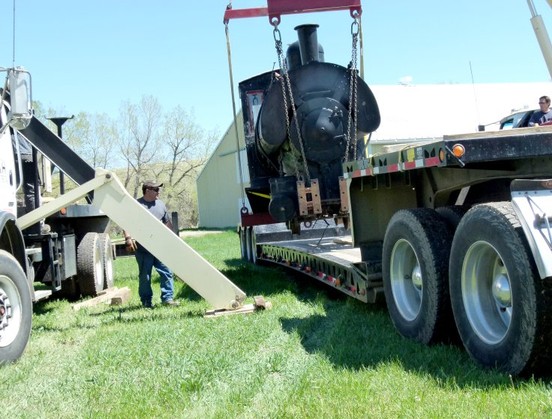
Done, Whew!!! Thanks guys.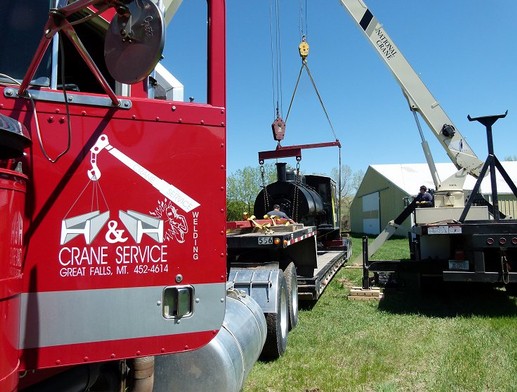
The steamer in the museum,
looks a little naked without the cab which took some doing to get it through the museum doors.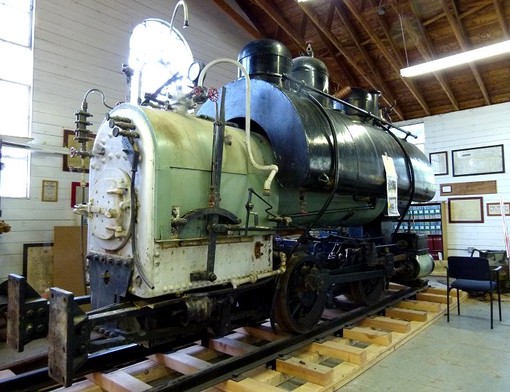
The cab inside, ready to lift onto the steamer.
Wonder if that jack will work, but wait, there seems to be some sort of HOLDUP!!!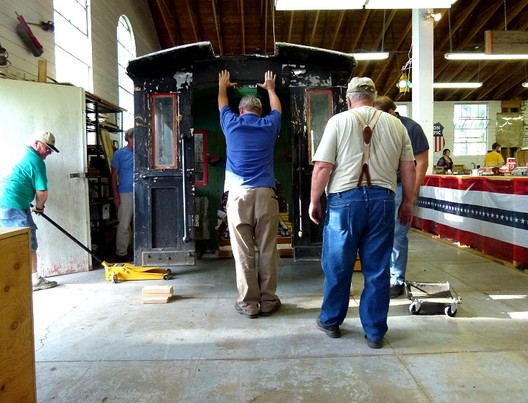
...more later
THE STORY OF THE “DINKY”
Locomotive No. 124 was built in 1926 for the Anaconda Copper Mining Company, by the Davenport Locomotive Works, Davenport, Iowa.
It was one of several of this type built for the Anaconda Company at the Black Eagle, MT copper refinery. It was used to move raw material into the mill, and finished product out for the Great Northern Railway and Milwaukee Road to haul throughout the country.
Because of the tight confines of the copper refinery, the track was built to a small 30-inch narrow gauge between the rails. Main line U.S. railroads have a gauge of 56 ˝-inches. This narrow industrial track allowed for very sharp curves, and small, comparatively light equipment, and rail.
The “Dinky” got its nickname from workmen also saw it as a very tiny, but powerful little locomotive. It could be run by one person, burning coal to heat the boiler water that made the steam to propel it, pulling or pushing its small car-loads of copper materials. The Dinky was used up into the mid- or late 1950s, being replaced by a small diesel locomotive.
It is a 0-4-0T type, meaning it has 4 driving wheels and carried water for the boiler in the tank slung over the boiler top. Its coal fuel was kept in a small bunker in the cab. It weighed just 15 tons vs. main line engines at 200 tons.
Jack Hoover saved the Dinky from being scrapped and his estate donated it to MMRH for preservation. Plans are to restore it to look as it did when delivered new in 1926.
